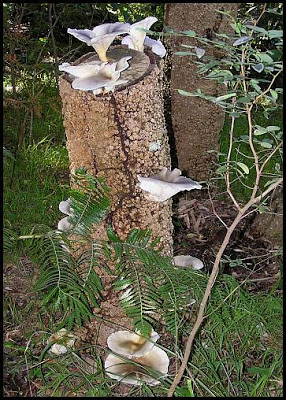
Interactions
Omphalotus nidiformis does not have legs and no way of transportation which makes reproduction harder and being preyed on simpler. The spores of this organism become dispersed by the wind in order to reproduce. (Abraham 2001) However, O. nidiformis is a saprotroph, or parasite, causing a white rot by breaking down lignin found in tree hosts. It is classified as a parasite because one organism is benefitting from another, without any reciprocation. The organism benefited is the mushroom, but the one hindered is the tree. Omphalotus nidiformis has an important task in the environment: breaking down wood and recycling nutrients into the soil. (Mill) According to Australian National Botanic Gardens at least 30 mammals have been found to eat mushroom fruiting bodies. (Lepp 2012) Unfortunately, none of these mammals are guaranteed to eat or have eaten this organism. But what is known are the causes when a human eats this fungus: after ingestion, approximately 30 minutes to two hours later the human will experience stomach cramps and vomiting lasting for several hours. On a positive note, the human will recover without lasting negative effects.

If you would like to see where the website creator found her sources involving Omphalotus nidiformis, please continue to the References page.